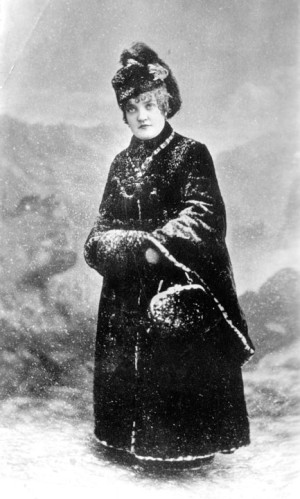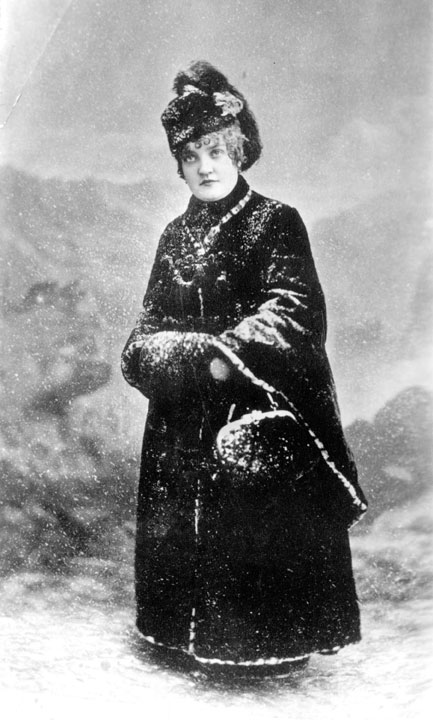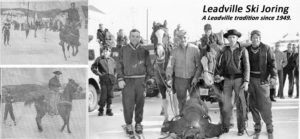By Craig Wagner
Leadville is home to one of the last legends of the Old West. Not a gunfighter or gambler but a tiny old woman who displayed extraordinary grit in the name of love and pride, and possibly madness. Her story has spawned books, movies and a famous opera.
Baby Doe Tabor’s scandalous affair and subsequent marriage to Horace Tabor has been well told. After Horace’s death, she returned to Leadville in 1901 at the age of 46. The 30 years she lived in a small cabin are more mysterious.
Her solitary life has drawn the attention of authors, researchers and paranormal detectives. But the elderly woman remains an enigma. Who was she? What kind of woman lives alone in a shack on the side of a mountain for thirty years?
Contemporaries left scattered accounts. Leadvillians held a disparaging view of “the old woman on the hill” because she had stolen the husband of Leadville’s First Lady, Augusta Tabor. But there is another, less obvious cause for their resentment. Baby Doe had a tremendous amount of pride. Having been Tabor’s wife and the Silver Queen of Colorado, she possessed a stiff dignity. She kept herself at arm’s length from the community, taking to the alleys when she descended into town for provisions or her mail.
[InContentAdTwo]
Despite her dire poverty she disdained charity, and most efforts to offer assistance were met ungraciously. On one occasion, she returned a package of clothing left at her doorstep to the newspaper office. She advised the editor to place an ad requesting the community no longer “offend” her by presuming to think she was “so desperate as to welcome these rags.” Coming from a woman who wrapped burlap over her shoes and lived in a tiny cabin alone over a dead mine, such an attitude could be taken for madness.
Indeed, according to local lore, Baby Doe grew quite batty. However, firsthand reports differ as to her actual mental state. A Leadville Daily Herald reporter named Max Vawter visited her in 1932 and recorded that she was a lively host, although he declined coffee after seeing mice run across the floor. In a commentary from 1985 housed in the Denver Public Library, Vawter commented that his two visits with the legendary mining woman turned out to be the high point of his career.
The Visions of Baby Doe

But what about when Baby Doe closed the door of her shack and shut out the world? Who was she when alone in her cabin? What went through her mind? The reality of her experience eludes complete understanding. However, clues abound.
Baby Doe left a written record that provides a glimpse – often fantastical – into her inner life. She populated her cabin with visions and dreams worthy of a saint. As a devoted Catholic, Baby Doe idolized Saint Theresa of Avila, who famously experienced ecstatic visions of heaven and hell.
Baby Doe’s visions are lodged in a collection of the Colorado Historical Society. In her own words she faced demons and angels. Adversaries lurk at every window and in each nook of her beloved Matchless Mine. In a gripping account on June 8, 1925, she recorded:
“I dreamed I was in bed & at my left side came … the devil in the form of a snake. I quickly put an iron … over the snakes head … & it made him the devil powerless and he was in agony & his round big black eyes bulged out & his terrible mouth opened in agony awful to look at.”
A passage from the night of Nov. 16, 1932 describes a more heavenly vision:
“O how He blessed me this night. I saw & watched the whole ceiling of my cabin on Matchless Mine growing green foliage all lacey & in long streamers of the most dainty long vines coming – growing out of the ceiling & hanging almost to the floor. The foliage was so beautiful I cannot describe its grandeur waving all over & covered with thousands of bright rubies. Shining red rubies & showers of gold bright…”
There is evidence Baby Doe was proud of her written work. After she died, The Denver Post printed an article titled “Friends Say Mrs. Tabor Had Plan to Publish Life Story.” An acquaintance quoted her as saying, “In those sacks are … countless visions I have experienced. They are truly my memoirs.”
If Baby Doe had published her sensational story it would contain elements of all three selves: prideful queen, visionary saint and the haunted witch who battled demons alone in her cabin.
Craig Wagner lives in Leadville and writes because he made too much money teaching in the public schools.





